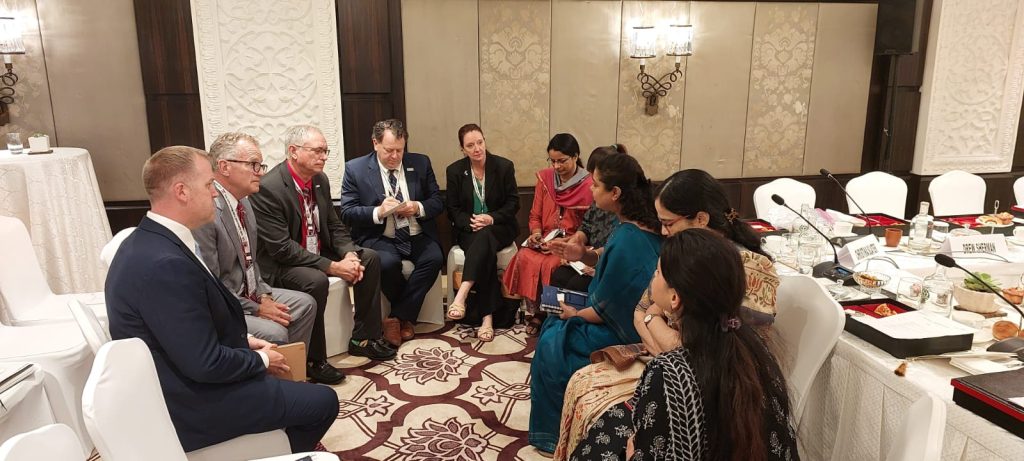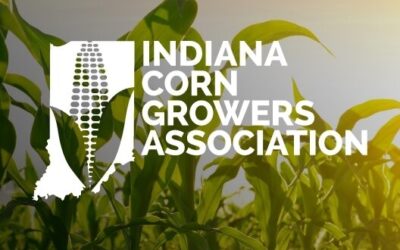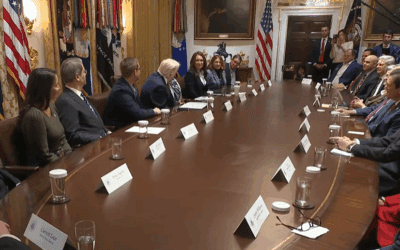More exports of ethanol and poultry to India possible after trade mission
Increased poultry, soybean meal and ethanol exports to India in the near future could help Indiana corn and soybean farmers on the long term. This was among the news a group of Indiana agriculture advocates learned during a trade mission to the Asian nation in late April.
USDA Under Secretary for Trade and Foreign Agricultural Affairs Alexis Taylor led the USDA-sponsored agribusiness trade mission that included a delegation of officials from 47 U.S. agribusiness and farm organizations and 11 state departments of agriculture seeking to develop and expand business opportunities with importers in India.
“As the world’s most-populous country and fifth-largest economy, India is primed for continued growth as a top destination for U.S. food and agriculture products,” Taylor said. “With a growing middle class that’s expected to exceed 660 million by 2030, India presents a strong consumer-oriented market where exports from American agribusinesses and producers can flourish.”
Courtney Kingery, CEO of the Indiana Soybean Alliance (ISA) and the Indiana Corn Marketing Council (ICMC), was among the Indiana delegation on the mission. After returning home, she reported that there are increasing opportunities for poultry companies and ethanol exporters in India.
“Indiana has a role to play in feeding and fueling the world,” Kingery said. “We met with customers in the fuel and ethanol industry and poultry producers in India. What we learned is that they need products from Indiana. They need our fuel. They need our soybean meal. They need our turkey, and they need our duck.”

She said Indian officials are transitioning from a focus on food security to nutrition security. Along with a growing middle class, that transition includes more protein in their diets. That is causing more demand for poultry products. Also, as announced in September 2023, tariffs on turkey and duck products imported into India have reduced from 30 percent to 5 percent.
“That really opens up that market for Indiana,” Kingery said. “More turkey and more duck going into India means more corn and soybeans and soybean meal being consumed by those turkeys and ducks eating locally.”
Indiana leads the nation in commercial duck production with 1.7 million ducks raised on Hoosier farms. The state is the third-largest commercial turkey producer with 8.4 million turkeys. Feeding these birds is another revenue source for Indiana row-crop farmers.
She said the Indian government also has the goal of utilizing 20 percent ethanol by 2025 in automotive fuel.
“Traditionally this has been a market for sugar cane ethanol,” Kingery reported. “They are now looking at moving into corn-based ethanol. India does not grow enough corn on their own to be able to supply the ethanol market to hit these targets, so there’s a tremendous opportunity around corn – Indiana corn, U.S. corn and Indiana and US ethanol to meet the needs for the Indian market.”

Katie Nelson, Deputy Director of the Indiana State Department of Agriculture (ISDA) was also part of the trade mission and said Indiana can help supply both goals. “We are focused on exports and the world is excited about the high quality of products that Indiana and the United States can supply them,” she explained.
Other members of the Indiana delegation to India were Becky Joniskan, President of the Indiana State Poultry Association; Drew Sherman, International Trade Director with ISDA and Sean Smith, General Manager of Culver Duck.
Posted: May 18, 2024
Category: ICMC, Indiana Corn and Soybean Post - May 2024, ISA, News




